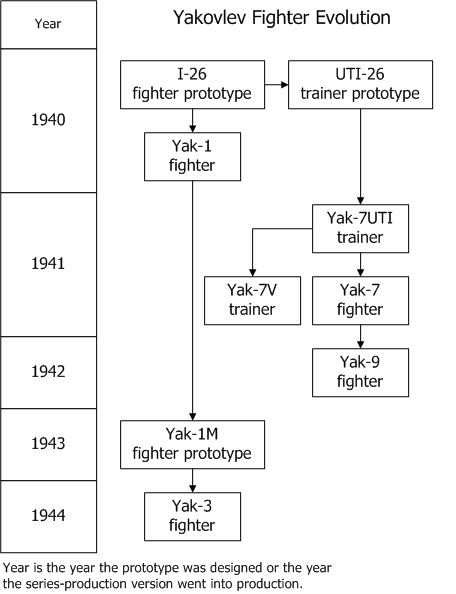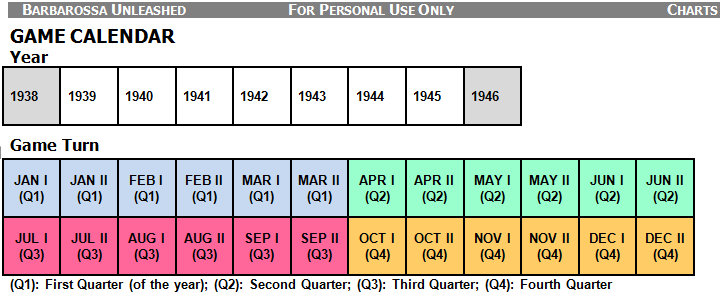
Previews of Work in Progress
The Soviet Chemical and Biological Warfare Programs
While researching the Soviet air forces of World War II, I became aware that from the mid-1930s the Soviets worked to have many bombers and ground attack aircraft capable of making chemical and biological warfare attacks on ground targets. The Soviets developed aircraft-mounted spray tanks capable of dispersing chemical and biological agents at low altitudes. They also developed a range of special aircraft bombs that could disperse chemical and biological agents upon detonation.
This led me to investigate the entire Soviet chemical and biological warfare programs from the 1920s through 1945 (to the end of the war). The offensive biological warfare program in this period was serious but somewhat small and not fully developed. However, the offensive chemical warfare program was quite extensive with numerous chemical agents in production by the start of the war with Germany in 1941.
I've compiled enough material for a small book on the subject, which I may develop more in the future. For now, here's a couple graphics from this work in progress:

The Geneva Protocol (formally, the Protocol for the Prohibition of the Use in War of Asphyxiating, Poisonous or Other Gases, and of Bacteriological Methods of Warfare) was negotiated and came into force in the mid-1920s. It prohibited countries which joined the protocol from using chemical and biological weapons in international warfare. It did not prohibit the development or production of chemical and biological weapons, so all major world powers, including countries in the protocol, developed chemical weapons before or during World War II, at least for retaliatory purposes should they be attacked by such weapons.

As the Geneva Protocol was being established in the mid-1920s, the Soviets decided to create a major chemical warfare industry. The industry grew dramatically in the 1930s, with numerous factories producing chemical weapons. The map shows the chemical warfare factories in production by 1939-41. In addition to these factories, other factories processed the agents into chemical munitions, and other factories supplied the equipment or chemical raw materials for the chemical warfare factories. The chemical weapons were tested at various proving grounds and stored in numerous arsenals located throughout the country. Various academic, governmental, and military institutions in cities across the USSR were involved in the research and administration of chemical weapons.
Rapid industrial development and large-scale production were Soviet priorities, with safety being a distinctly secondary concern. This meant that, to varying degrees, every chemical warfare factory polluted its locality with toxic chemicals. Moskva was too important to risk, so production of highly-dangerous arsenic-based agents was moved out of the city after arsenic pollution became a problem there. Elsewhere, however, the cities had to endure whatever the factories released in the air and water or buried in the ground. This led to major public health problems in Stalingrad (Volgograd), and even today the cities of Chapaevsk and Dzerzhinsk are highly polluted. Even Moskva did not escape significant problems, as, for example, a former chemical weapons proving grounds was turned into a city park without being properly decontaminated.
The Soviet Air Forces of World War II
As part of my work on Barbarossa Unleashed, I have been reviewing the Soviet air forces from top to bottom: theory, doctrine, command, organization, air units, aircraft ratings, and more. Here's a sample on Yakovlev fighters.

The Yakovlev fighters were the most-produced fighters of the Soviet Union during World War II. They were the work-horses of the Soviet air forces, like the Spitfires were to Britain and the Bf 109s were to Germany. These fighters all ultimately derived from the I-26 prototype. This was a promising design but, like almost all new aircraft, had a number of problems. Most countries would have corrected the problems before starting production. Stalin's purges, however, caused the Soviet aircraft industry to miss a cycle of aircraft development. As a result, the Soviets went from having fighters equal to or better than those of other major countries in 1936 to having fighters clearly inferior by 1939. To make up for lost ground, the Soviets instituted crash design and development programs. New aircraft went into production before their problems were worked out or, sometimes, even discovered. Instead, the new aircraft were modified directly on the production lines to try to solve their problems. Typically, a new aircraft needed thousands of changes during its first year or so of production.
The Soviets changed their aircraft designation scheme during I-26 development, so the production fighter became the Yak-1 instead of the I-26. The Soviets also designed a stripped-down version of the I-26 design as a trainer, the UTI-26. The designation scheme change meant that the production trainer was the Yak-7UTI instead of the UTI-26. The Yakovlev factories were busy correcting some of the problems when the Germans invaded in 1941. An improved model, the Yak-3, was planned to go into production in 1941. It was canceled at prototype stage so that the factories would continue to increase Yak-1 production, rather than interrupt production to switch to a new model.
Demand for fighters dramatically increased because of heavy Soviet air losses. The Yak-7UTI was redesigned to be simpler and use fewer parts, becoming the Yak-7V. On their own initiative, members of the Yak-7UTI team also equipped the trainer with full fighter equipment, and this aircraft's performance proved to be only slightly less capable than the Yak-1. This meant that the Yak-7UTI production lines could be use to make fighters as well as trainers, and the fighter version went into series production in 1941 as the Yak-7.
In 1942, the Yakovlev factories continued to improve the Yak-1 and Yak-7. A Yak-7 project in 1942 led to the creation of a new, improved model, the Yak-9. This fighter quickly went into production and remained in production throughout the war, with numerous improvements made over time.
The Yak-1 continued to be improved as well. In 1943, a major effort to "modernize" the fighter led to the creation of the Yak-1M prototype in 1943. The Soviets decided that the changes warranted a new model number, so the Yak-1M entered production as the Yak-3 in 1944. This reused the designation of the 1941 Yak-3 model that did not go into production, but the 1944 Yak-3 was completely different from the 1941 Yak-3. The 1944 Yak-3 was the most agile of the wartime Yakovlev fighters, and, like the Yak-9, remained in production for years after the war ended.
Barbarossa Unleashed
Barbarossa Unleashed is my working title for a Classic Europa update of Fire in the East. Here's a view of the Turn Record Chart:

The year is divided up into four quarters, which makes some rules easier to phrase, such as "once per quarter".
I'll post more when I get some time.